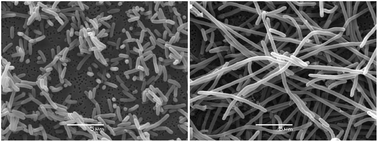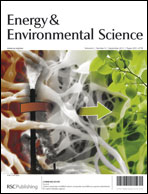Cisplatin-induced elongation of Shewanella oneidensis MR-1 cells improves microbe–electrode interactions for use in microbial fuel cells†
Abstract
Here, we present an unusual approach of modifying the growth pattern of electroactive bacteria for improving their communication with electrodes. Cells of a known exoelectrogen, Shewanella oneidensis MR-1, were treated with cisplatin, a


 Please wait while we load your content...
Please wait while we load your content...